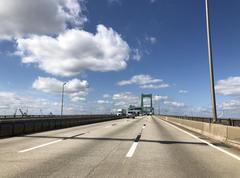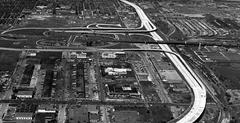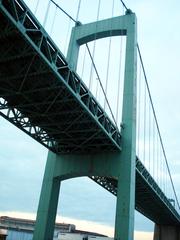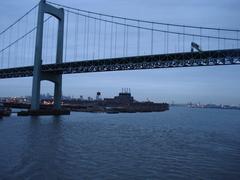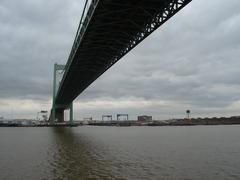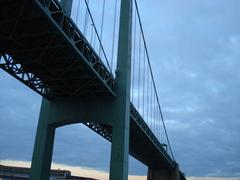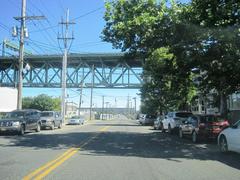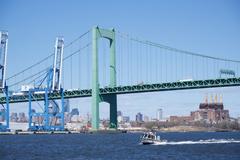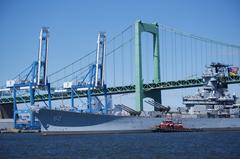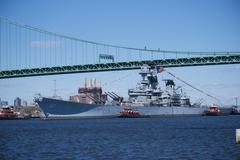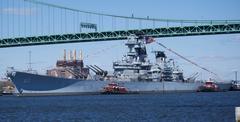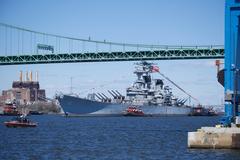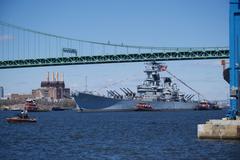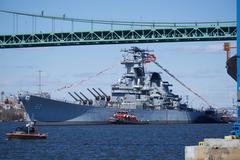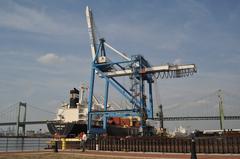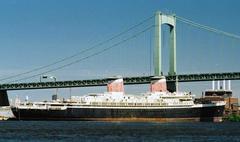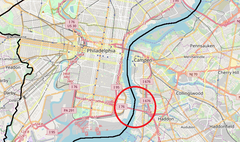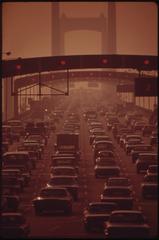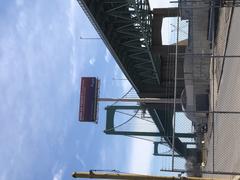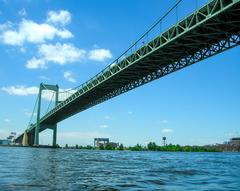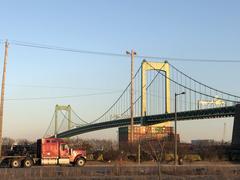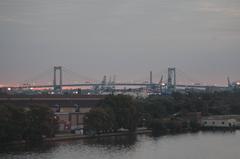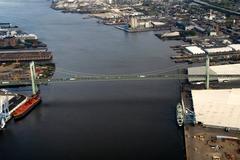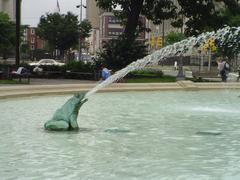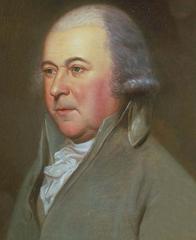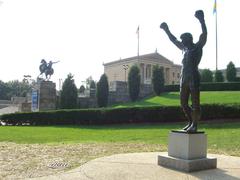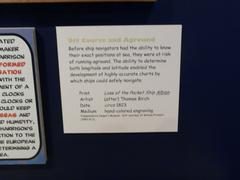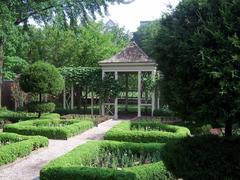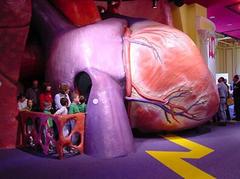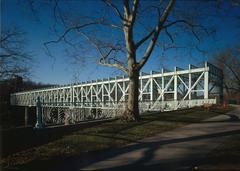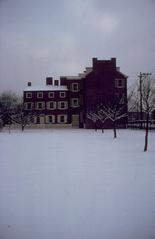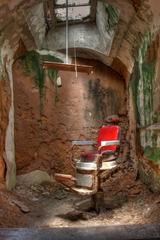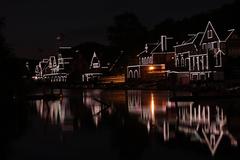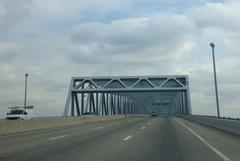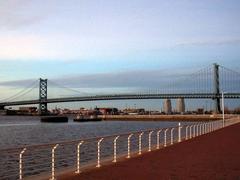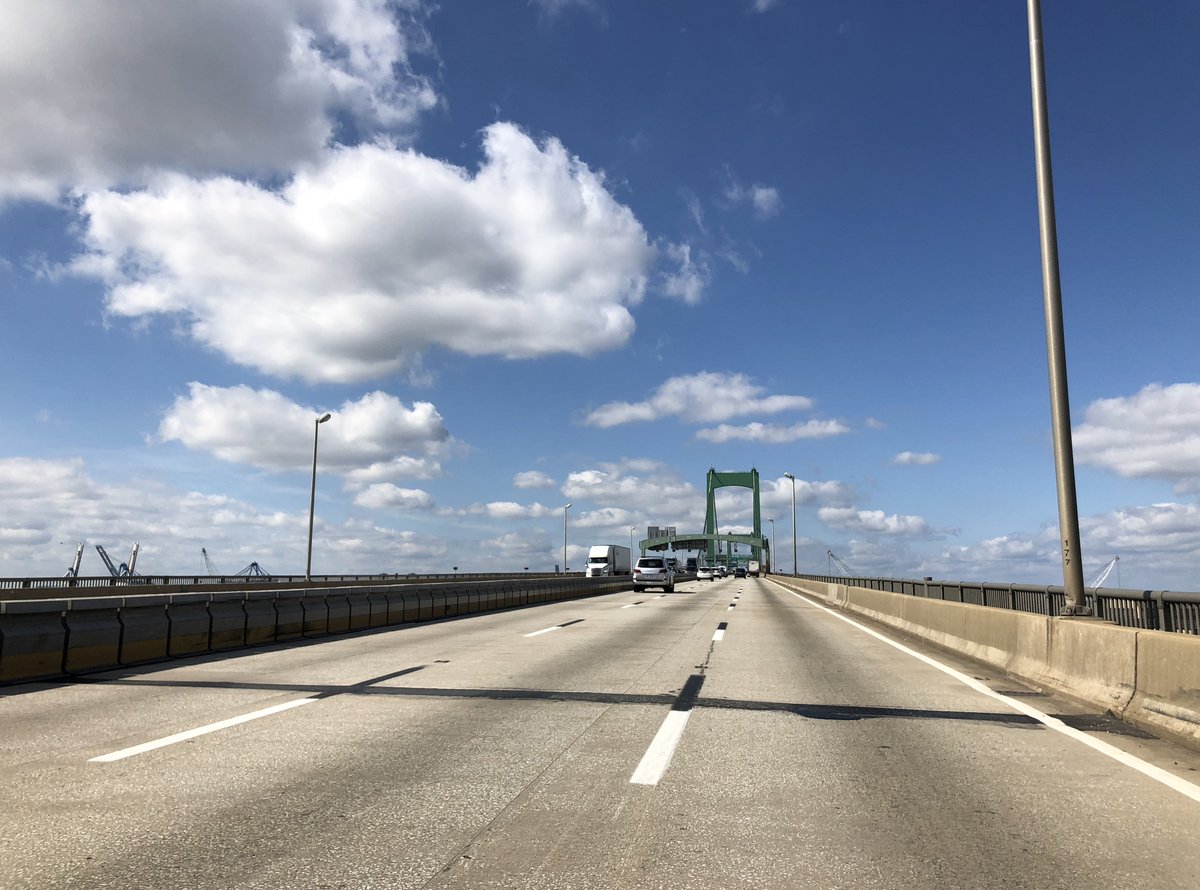
Comprehensive Guide to Visiting Walt Whitman Bridge, Philadelphia, United States
Date: 20/07/2024
Introduction
The Walt Whitman Bridge, a monumental structure connecting Philadelphia, Pennsylvania, to Gloucester City, New Jersey, stands as a significant landmark in the United States. Named in honor of the esteemed poet Walt Whitman, who spent his final years in nearby Camden, New Jersey, this iconic suspension bridge is a testament to mid-20th-century engineering prowess. Opened on May 16, 1957, the bridge was designed by the renowned civil engineer Othmar Ammann and has since played a crucial role in the region’s transportation network (DRPA History). Spanning 2,000 feet across the Delaware River, the Walt Whitman Bridge not only alleviated traffic congestion on the Benjamin Franklin Bridge but also provided a more direct route for travelers heading to southern New Jersey. The bridge’s construction, involving over 60,000 tons of steel and 1.1 million cubic yards of concrete, marked a significant engineering feat of its time (Structurae). Beyond its structural significance, the bridge has profound economic, social, and cultural impacts on the surrounding communities. This comprehensive guide delves into the bridge’s history, design, visitor information, and nearby attractions, offering an in-depth look at one of the United States’ most important infrastructure assets.
Table of Contents
- Introduction
- Construction and Inception
- Design and Engineering
- Economic and Social Impact
- Renovations and Upgrades
- Cultural Significance
- Visitor Tips
- FAQs
- Conclusion
Exploring the Walt Whitman Bridge
Construction and Inception
The Walt Whitman Bridge, an iconic suspension bridge spanning the Delaware River, connects Philadelphia, Pennsylvania, to Gloucester City, New Jersey. Named after the famous American poet Walt Whitman, who spent his last years in Camden, New Jersey, the bridge stands as a testament to post-World War II engineering ambitions.
The idea for the bridge was conceived in the early 20th century, but it wasn’t until the 1950s that the project gained momentum. The Delaware River Port Authority (DRPA) was instrumental in bringing the project to fruition. Construction began in 1953, and the bridge was officially opened to traffic on May 16, 1957. The total cost of the project was approximately $90 million, a substantial investment at the time (DRPA History).
Design and Engineering
Designed by renowned civil engineer Othmar Ammann, the Walt Whitman Bridge boasts a main span of 2,000 feet, making it one of the longest suspension bridges in the world at the time of its completion. The total length of the bridge, including approaches, is about 11,982 feet (Structurae).
The construction involved the use of approximately 60,000 tons of steel and 1.1 million cubic yards of concrete. The main cables, composed of thousands of individual wires, ensure maximum strength and durability. The bridge’s towers rise to a height of 378 feet above the water, providing a striking visual landmark for the region.
Economic and Social Impact
The opening of the Walt Whitman Bridge had a profound impact on the region’s economy and transportation network. It provided a crucial link between Philadelphia and southern New Jersey, facilitating the movement of goods and people. The bridge significantly reduced travel time between the two states, promoting economic growth and development in the surrounding areas.
The bridge also played a vital role in the expansion of the interstate highway system. It connects to Interstate 76 (I-76) in Pennsylvania and Interstate 676 (I-676) in New Jersey, serving as a major artery for regional and national transportation. The increased accessibility contributed to the growth of suburban communities in New Jersey, as more people were able to commute to Philadelphia for work and leisure (Federal Highway Administration).
Renovations and Upgrades
Over the years, the Walt Whitman Bridge has undergone several renovations and upgrades to maintain its structural integrity and accommodate increasing traffic volumes. In the 1990s, the bridge underwent a significant rehabilitation project that included the replacement of the bridge deck, installation of new lighting, and improvements to the toll plaza. This project, which cost approximately $128 million, was completed in 1999 (DRPA Projects).
More recently, the bridge has seen additional upgrades to enhance safety and efficiency. In 2014, the DRPA initiated a $140 million project to replace the suspension cables and upgrade the bridge’s seismic retrofitting. This project aimed to extend the bridge’s lifespan and ensure it could withstand potential earthquakes. The project was completed in 2020, further solidifying the bridge’s status as a critical infrastructure asset for the region.
Cultural Significance
Beyond its practical importance, the Walt Whitman Bridge holds cultural and symbolic significance for the communities it connects. Named after one of America’s most beloved poets, the bridge serves as a tribute to Walt Whitman’s legacy and his connection to the region. Whitman’s poetry often celebrated the American spirit and the beauty of the natural world, themes that resonate with the bridge’s role in linking diverse communities and landscapes.
The bridge has also been featured in various forms of media, including films, television shows, and literature, further cementing its place in popular culture. Its distinctive design and prominent location make it a recognizable landmark, often associated with the city of Philadelphia and its rich history.
Visitor Tips
Best Times to Visit
For those interested in experiencing the Walt Whitman Bridge, the best times to visit are during off-peak hours to avoid heavy traffic. Weekdays between 10 AM and 3 PM and after 7 PM are generally less congested. Weekends tend to be less crowded, except during major holidays and events in Philadelphia or New Jersey.
Toll Information
The bridge is a toll bridge, with tolls collected only for westbound traffic entering Pennsylvania. As of 2024, the toll for passenger vehicles is $5.00, payable by cash or E-ZPass (DRPA Tolls).
Parking and Accessibility
While the bridge itself does not offer parking, several parking options are available in the vicinity. In Philadelphia, parking garages and lots are available near the bridge’s entrance. For those planning to explore the area on foot, consider parking at nearby attractions such as the Philadelphia Navy Yard or the Sports Complex, which offer ample parking and are within a short distance.
Safety Precautions
Pedestrian access on the Walt Whitman Bridge is restricted, so it is essential to adhere to safety guidelines. For those driving, ensure your vehicle is in good condition, especially during inclement weather. The bridge can be windy, so maintain a firm grip on the steering wheel and keep a safe distance from other vehicles.
Scenic Views and Photography
The bridge offers stunning views of the Delaware River and the Philadelphia skyline. For the best views, consider driving from New Jersey to Philadelphia during sunset. Although pedestrian access is not available on the bridge, nearby parks and waterfront areas provide excellent vantage points for photography and sightseeing.
Nearby Attractions
Visitors can explore several attractions near the Walt Whitman Bridge. In Philadelphia, the historic Independence Hall and the Liberty Bell are must-see landmarks. On the New Jersey side, the Adventure Aquarium and the Battleship New Jersey are popular destinations.
Dining Options
There are numerous dining options near the Walt Whitman Bridge to suit various tastes. In Philadelphia, the Italian Market offers a range of eateries and food stalls. For a more upscale dining experience, consider Ristorante Pesto or Amada. In New Jersey, the Victor Pub and The Victor’s Pub provide casual dining with views of the river.
Public Transportation
For those preferring not to drive, public transportation options are available. The SEPTA system in Philadelphia offers bus and subway services that connect to the bridge area. Additionally, the PATCO Speedline provides convenient access between Philadelphia and New Jersey, with stops near the bridge.
Weather Considerations
Weather can significantly impact your visit to the Walt Whitman Bridge. Summers in Philadelphia can be hot and humid, while winters can bring snow and ice. Check the weather forecast before your trip and plan accordingly. For real-time weather updates, visit Weather.com.
Emergency Services
In case of emergencies, it is crucial to know the nearest services. The Thomas Jefferson University Hospital in Philadelphia and the Cooper University Hospital in Camden, New Jersey, are the closest major medical facilities. For immediate assistance, dial 911.
Bridge Maintenance and Closures
Occasionally, the Walt Whitman Bridge undergoes maintenance and may have lane closures. To avoid delays, check for any scheduled maintenance or closures on the Delaware River Port Authority’s website.
Environmental Considerations
The Delaware River Port Authority is committed to environmental sustainability. Efforts include reducing emissions and promoting green initiatives. Visitors can learn more about these efforts and how to support them by visiting the DRPA’s environmental page.
FAQs
Q: What are the visiting hours for the Walt Whitman Bridge? A: The bridge is open 24/7. However, guided tours and educational programs may have specific timings.
Q: Is there a guided tour available for the Walt Whitman Bridge? A: Yes, the DRPA occasionally offers guided tours and educational programs. Check their website for the latest information.
Q: What is the toll for crossing the Walt Whitman Bridge? A: As of 2024, the toll for passenger vehicles is $5.00, payable by cash or E-ZPass.
Q: Are there any nearby attractions to visit? A: Yes, nearby attractions include Independence Hall and the Liberty Bell in Philadelphia, and Adventure Aquarium and the Camden Waterfront in New Jersey.
Conclusion
The Walt Whitman Bridge remains an enduring symbol of engineering excellence and regional connectivity. Since its opening in 1957, it has facilitated the movement of goods and people between Pennsylvania and New Jersey, significantly contributing to the economic growth and development of the surrounding areas. The bridge’s historical and cultural significance, coupled with its impressive design and continuous upgrades, makes it a vital component of the Philadelphia region’s infrastructure (Federal Highway Administration). For visitors, the bridge offers not only a practical route but also stunning views of the Delaware River and the Philadelphia skyline. With nearby attractions like Independence Hall, the Liberty Bell, and the Adventure Aquarium, a trip to the Walt Whitman Bridge can be a memorable experience filled with historical and cultural exploration. As the bridge continues to undergo improvements to enhance safety and efficiency, it stands as a testament to the enduring legacy of mid-20th-century engineering, celebrating both the past and the future of this vibrant region. For the latest updates and events related to the bridge, visitors are encouraged to check out the DRPA website and follow related social media channels.
References
- Delaware River Port Authority. (n.d.). History. https://www.drpa.org/history
- Structurae. (n.d.). Walt Whitman Bridge. https://structurae.net/structures/walt-whitman-bridge
- Federal Highway Administration. (n.d.). Interstate History. https://www.fhwa.dot.gov/interstate/history.htm
